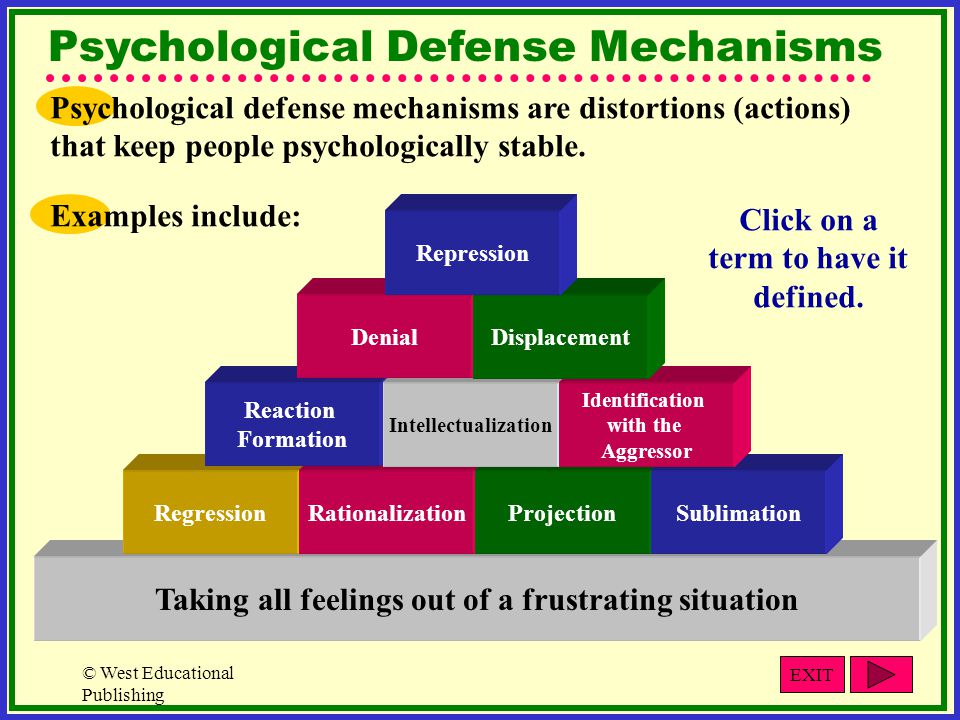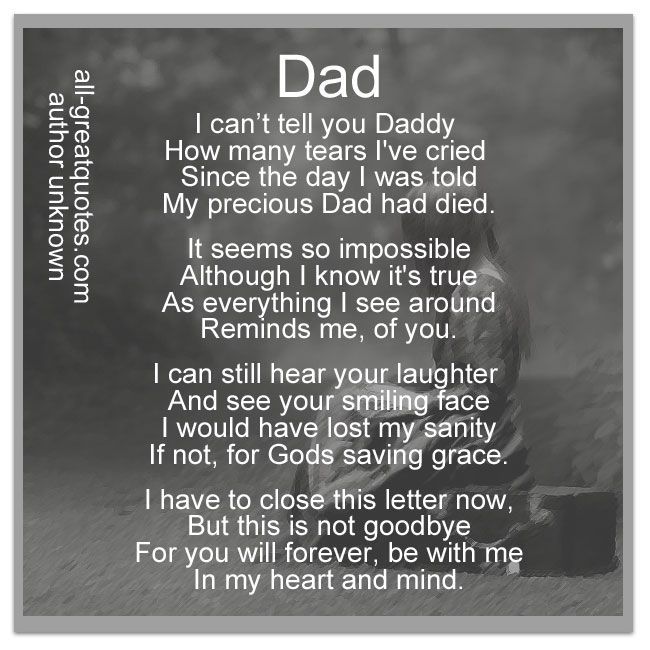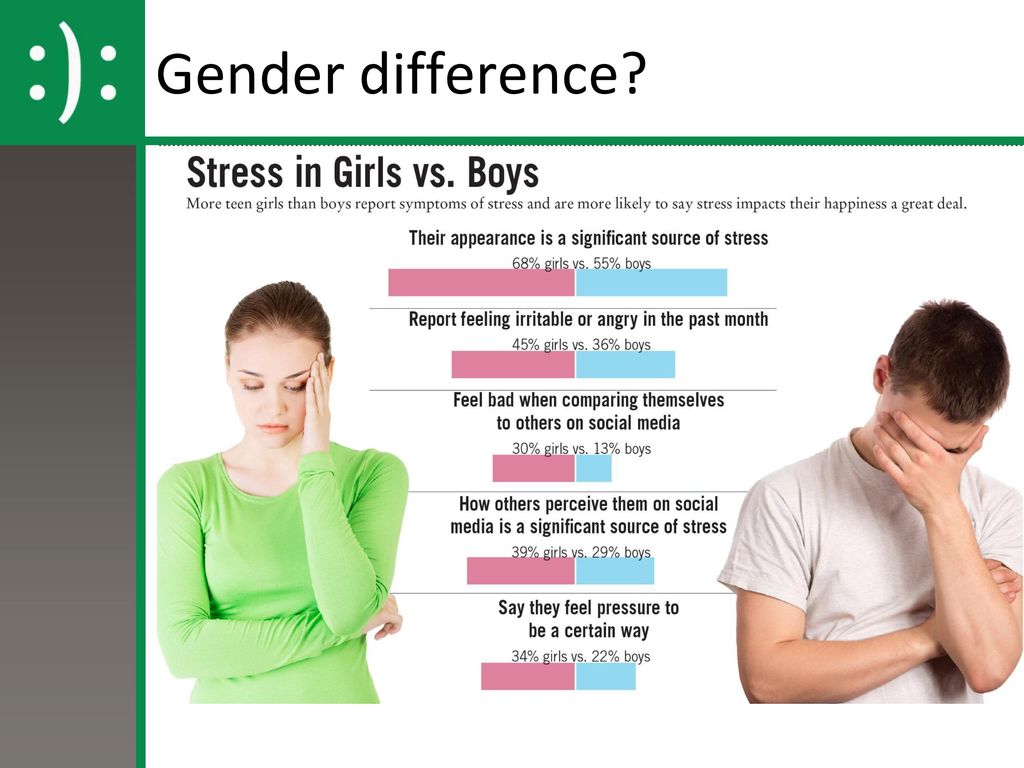Define displacement defense mechanism
What is displacement in psychology?
Displacement is a defense mechanism that involves an individual transferring negative feelings from one person or thing to another. For example, a person who is angry at their boss may “take out” their anger on a family member by shouting at them.
The American Psychological Association (APA) says that people use defense mechanisms unconsciously to prevent or release negative thoughts and emotions. Although this process may be helpful for the person’s emotional state, it can lead to problems in relationships if it occurs frequently.
This article discusses the psychoanalytic theory of displacement, looking at its history, some examples, and more.
According to the APA, displacement is the transfer of negative feelings from one person or thing to another.
The theory is that a person deals with the tension or anxiety associated with negative feelings, such as fear or anger, by releasing them on a nonthreatening target.
For example, if a person experiences negative emotions due to their boss shouting at them, they may transfer these emotions to someone or something else, such as a member of their family or a household object.
The person might feel as though they cannot confront their boss for fear of losing their job. As a result, they may take their anger out on someone who is less threatening, such as their partner or housemate.
As displacement is an unconscious defense mechanism, the person may not realize that they are doing it.
Sigmund Freud was an Austrian neurologist who developed psychoanalysis at the start of the 20th century.
According to the APA, psychoanalysis is a set of theories about emotions and behaviors, and it is based on the idea that mental processes are unconscious. The APA says that the term “unconscious” refers to the processes of the mind of which a person is unaware.
Freud discussed different defense mechanisms throughout his work. These unconscious psychological processes serve to protect a person from unwanted feelings or unacceptable thoughts.
His daughter, Anna Freud, later defined the mechanisms more clearly, creating 10 major defense mechanisms and adding more detail.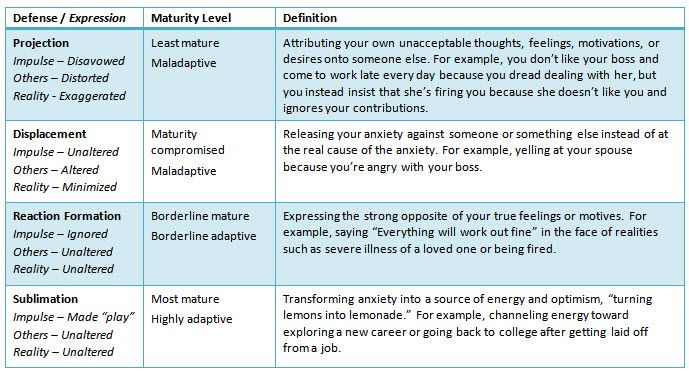
Additional researchers continued to add new defense mechanisms throughout the years, including displacement.
Defense mechanisms such as displacement are not inherently bad. For example, displacement may allow a person to express themselves and relieve stress, even if they are directing it toward the wrong target.
This mechanism allows a person to process stress and anxiety in ways that are less threatening and more socially acceptable than confronting the issue head-on — for example, by shouting back at their boss.
Although displacement can serve a positive function for a person, it can also lead to negative consequences that may affect a person’s life and relationships.
Displacement can also be part of a damaging and unhealthy cycle.
For example, if a person has a negative experience at work, they may respond by shouting at their partner over a minor mistake when they get home.
This behavior may make their partner angry and frustrated, and they may release these emotions by shouting at their child.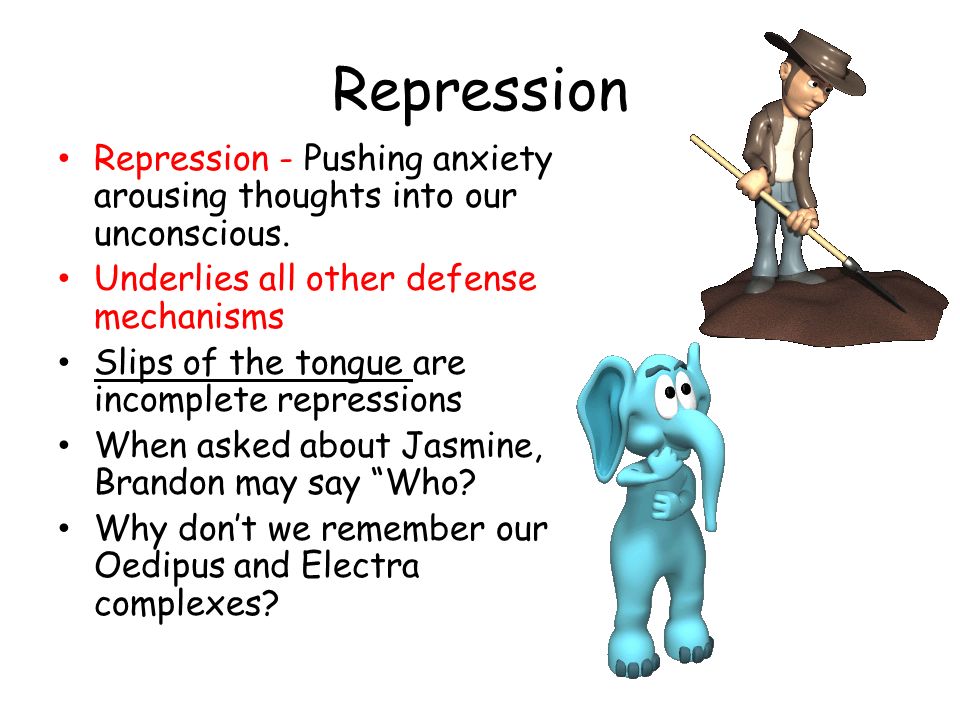 The child may respond to the anger and powerlessness they feel by bullying other children at school.
The child may respond to the anger and powerlessness they feel by bullying other children at school.
Impact of displacement
Displacement can have various effects on both an individual level and a global scale. Here are examples of some of the consequences that might result from displacement:
- Relationship problems: A person who always displaces their work-related anger onto others may begin to have difficulty forming long lasting relationships. By directing their aggression and frustration at their friends and family, they may push them away.
- Problems with substance misuse and addiction: In a 2017 study, people living with alcohol use disorder scored higher on scores of “immature defensive mechanisms,” such as displacement, than those without this condition. The authors note that addressing these defense mechanisms in people living with alcohol use disorder may help with providing treatment.
- Prejudice: Displacement might cause a person to transfer anger resulting from one thing toward a specific group of people.
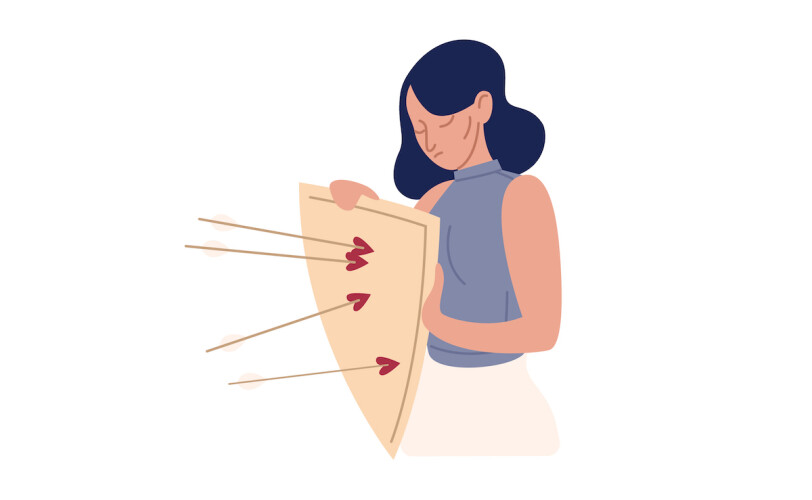 For example, if a person struggles to find a new job following a redundancy, they might start to blame immigrants for their lack of employment.
For example, if a person struggles to find a new job following a redundancy, they might start to blame immigrants for their lack of employment. - Scapegoating: Similarly to the above example, displacement may help explain why people sometimes blame large-scale economic or social issues on others. It can also happen on a small scale in everyday situations. For example, a person might have a difficult commute before returning to a messy home. They might then blame their partner or housemate for the mess, even if it resulted from someone or something else.
Seeking help for addiction may seem daunting or even scary, but several organizations can provide support. If you believe that you or someone close to you is struggling with addiction, you can contact the following organizations for immediate help and advice:
- Substance Abuse and Mental Health Services Administration (SAMHSA): 800-662-4357 (TTY: 800-487-4889)
- National Suicide Prevention Lifeline: 800-273-8255
It can be difficult for a person to identify displacement in themselves.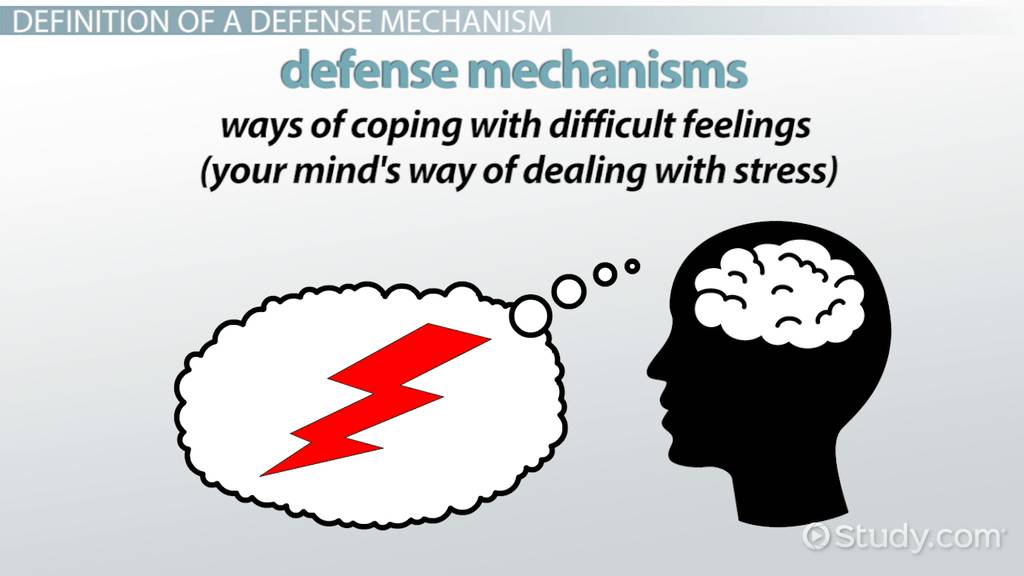 However, anyone who realizes that they are reacting emotionally to someone or something can begin by asking themselves whether their reaction is proportionate to the event that triggered it.
However, anyone who realizes that they are reacting emotionally to someone or something can begin by asking themselves whether their reaction is proportionate to the event that triggered it.
For example, if a person shouts at a waiter for bringing them the wrong dish, they may be displacing anger from another event. If they analyze the situation, they may realize that their anger resulted from something that happened elsewhere earlier in the day.
Some other methods may help prevent or minimize displacement. A person could try:
- Keeping a diary: A diary may help a person analyze their behavior and emotions and keep some distance from the situation. It can also allow them to vent any negative feelings privately.
- Meditating: Meditation and other mindful practices, such as yoga, may help by allowing a person to be mindful of their feelings and actions.
- Exercising: Research suggests that regular exercise can reduce stress and increase emotional resilience.
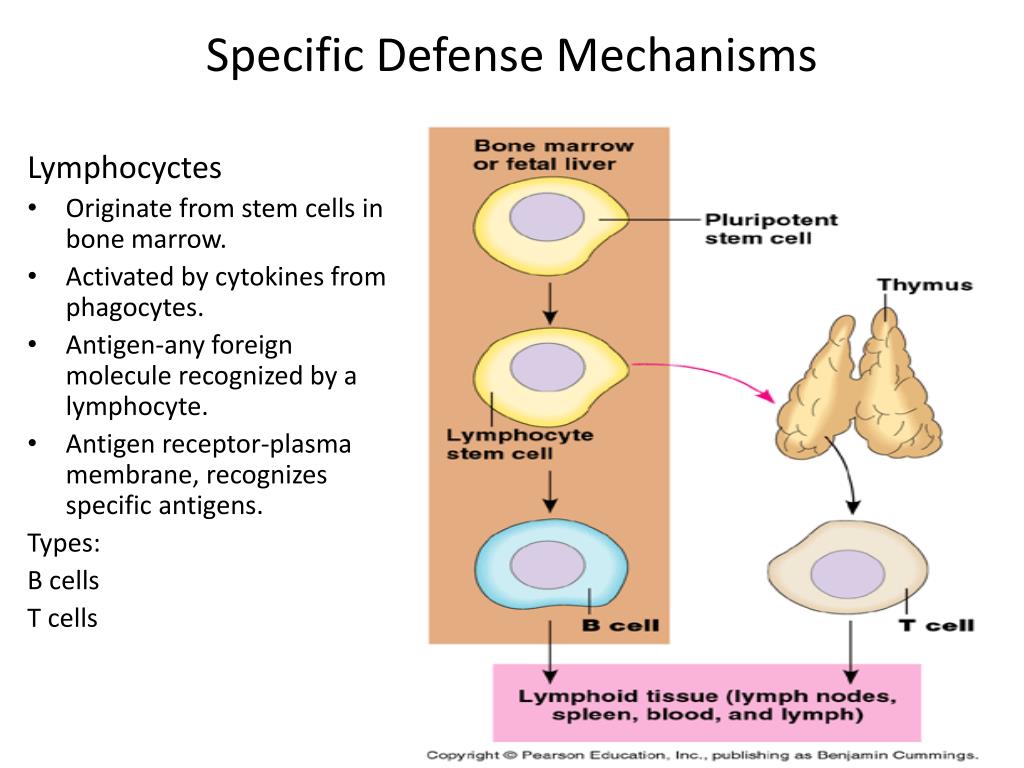
After Anna Freud identified defense mechanisms and expanded on what they are, researchers continued to add to the list of types over the years.
Although each type is different, all defense mechanisms provide ways for a person to deal with difficult emotions. They may help a person avoid feeling unpleasant thoughts, such as grief and guilt.
It is possible to experience multiple defense mechanisms.
| Defense mechanism | Definition | Example |
|---|---|---|
| Avoidance | Dismissing uncomfortable thoughts or feelings by staying away from people, places, or situations associated with them. | Someone who has been in a traumatic car accident starts to avoid driving. |
| Denial | Continuing to engage in behaviors that may be damaging while dismissing the real-life consequences of the situation. | Someone continues to shop for expensive designer clothes despite being in serious financial debt.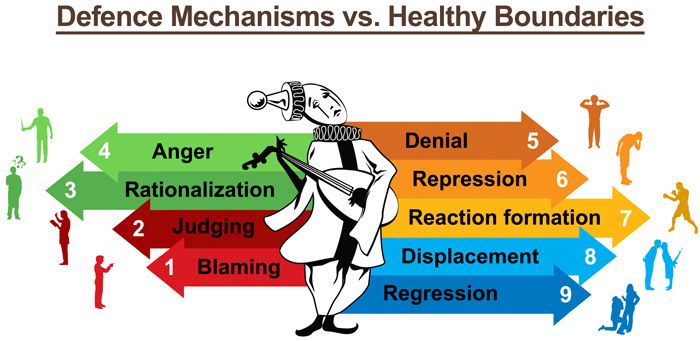 |
| Humour | Reducing, resisting, or hiding negative emotions that may result from a situation by joking about it. | A person tells a funny story about someone during a eulogy. |
| Projection | Attributing one’s own behaviors and shortcomings to someone else. | A person who is secretly unfaithful to their spouse accuses their spouse of the same behavior. |
| Regression | Returning to behaviors from an earlier stage of life. | A child begins wetting the bed after a traumatic incident, even though they have already grown out of this behavior. |
| Rationalization | Justifying one’s behavior by attempting to provide a rational explanation. | After stealing money, a person makes the excuse that they needed it more than the person from whom they stole it. |
A person may or may not be aware that they are using these defense mechanisms.
Learn more about defense mechanisms in psychology.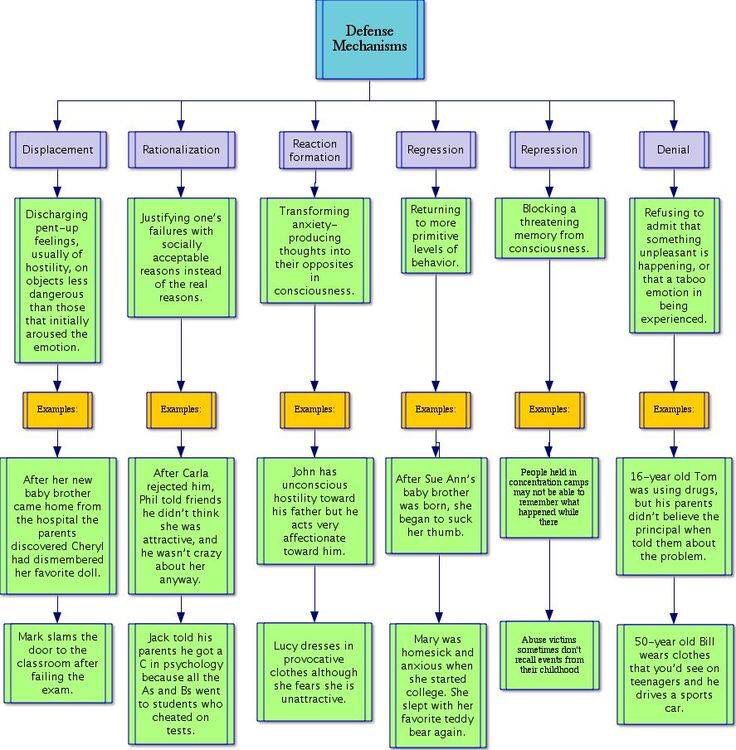
When a person becomes overly dependent on displacement — or any other defense mechanism — for dealing with their stress and emotions, it can become a problematic behavior for them.
A therapist can help a person recognize displacement in their behaviors and work with them to form different strategies to cope with difficult emotions.
Some treatment options that a therapist may provide include:
Cognitive behavioral therapy (CBT)
CBT is a short-term therapy technique that can help people identify and re-frame their thought patterns. During CBT, a therapist will work with a person to identify negative thoughts and feelings that may arise from specific events. The goal of CBT is to re-frame negative thoughts and actions into more beneficial ways of thinking and behaving.
Learn more about CBT.
Psychodynamic therapy
This more long-term form of talking therapy can help people better understand their thoughts and feelings. Psychodynamic therapy pays special attention to unconscious thoughts and behaviors.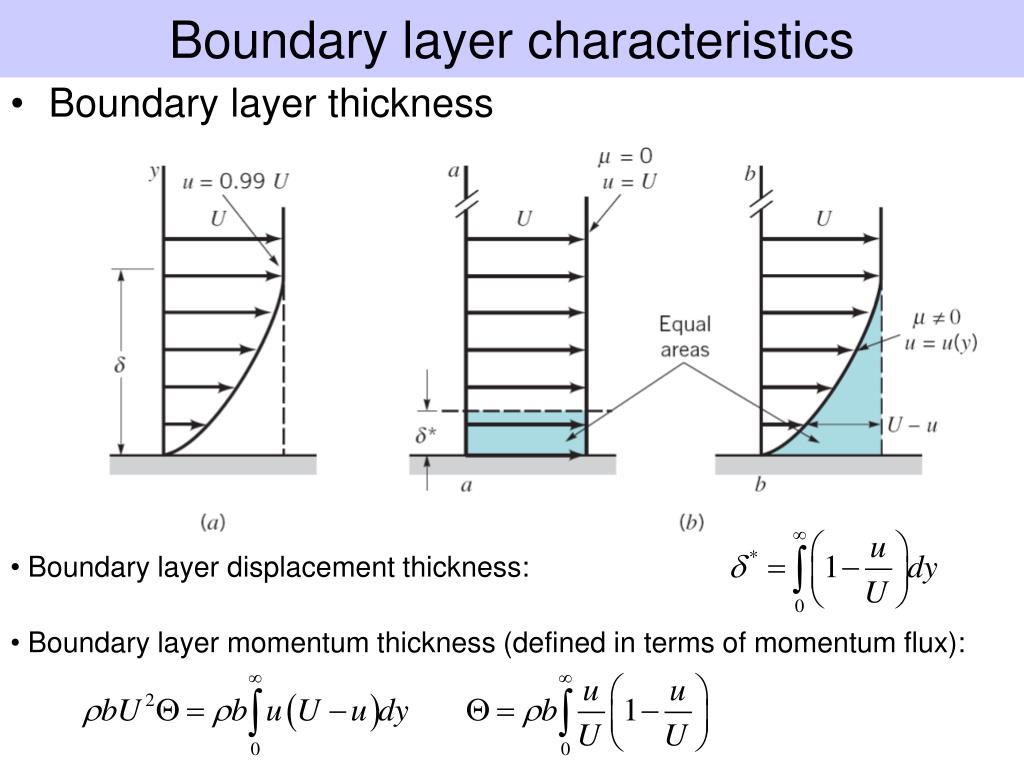 For this reason, it can be very helpful for examining and understanding unconscious defense mechanisms.
For this reason, it can be very helpful for examining and understanding unconscious defense mechanisms.
Learn more about psychodynamic therapy.
Medication
Defense mechanisms are a normal reaction to difficult thoughts and feelings. However, if a person is dealing with mental health issues, such as depression, it can be more difficult to avoid unhealthy defense mechanisms.
Medications such as antidepressants can be effective in treating depression and other mental health conditions.
A person should speak with a doctor if they think that they might have a mental health condition. The doctor can work with the person to create an effective treatment plan.
Learn more about the types, benefits, and side effects of antidepressants.
Displacement is a defense mechanism that some people use unconsciously in response to stress and other negative emotions.
Although it can serve a healthy purpose in some cases, overreliance on it can lead to maladaptive behaviors that create problems in a person’s relationships or work.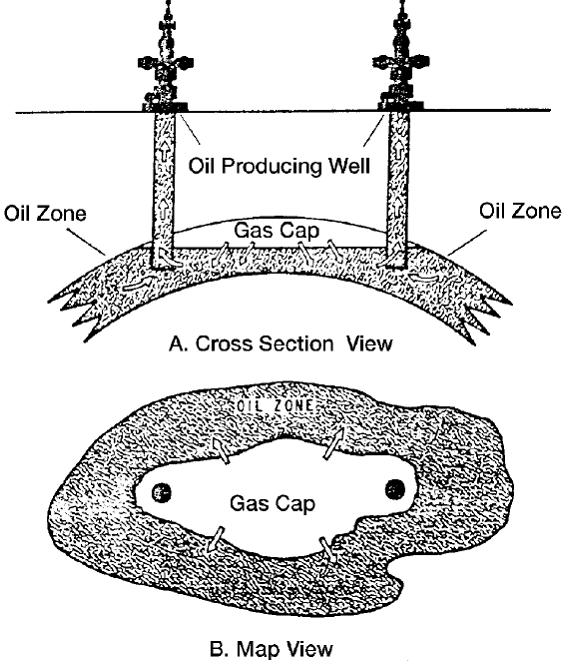
Talking with a psychologist or counselor may help people find new and better ways to cope with stress and anxiety.
Displacement - Psychology Defense Mechanisms
Introduction
In this post, we will focus on understanding what is the psychological defense mechanism of displacement, why we use it, how it can lead to certain problems and the steps that a therapist can use to help the client who is facing issues due to displacement.
Defense Mechanism of Displacement: Case Study
A young girl recently called for therapy. When asked what is it for, she said, “My work is affecting my family life, I lose my temper at work because of my boss, he shouts and insults me like a moron and I remove all the anger on my younger sister at home, and now, it is affecting my relationship with her, please help!”
Haven’t we heard similar stories or even experienced this?
Well, this is a classic example of the defense mechanism of Displacement.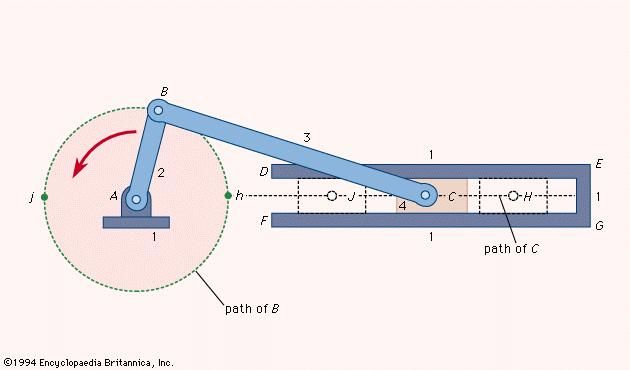
What is Displacement?
In Freudian psychology, displacement (German: “shift, move”) is an unconscious defense mechanism whereby the mind substitutes either a new aim or a new object for goals felt in their original form to be dangerous or unacceptable.
Displacement involves shifting your true feelings from the original, anxiety-provoking provoking thought to a target that is less harmful or non-threatening (based on individual perception).
What causes Displacement?
Displacement occurs when we shift our emotions and actions from the actual desired target to a substitute target:
- Based on individual perceptions and beliefs about the circumstances or
- Due to the lack of skills to handle the circumstances
Like in the above example, the girl gets extremely angry at her boss, but she can’t do much since she fears losing her job, so in effect, the anger is directed at her younger sister who she perceives as a safer target.
What is the purpose of displacement?
The purpose of this unconscious defense mechanism is generally to release the pent up emotions by directing it elsewhere, thereby causing less harm or many times no harm at all to the person feeling those emotions.
Problem with over-dependence on Displacement
However, if we are unaware of this displaced anger, or even if we are aware and the behaviour is often repeated, it could cause serious complications and issues in the person’s life. In the above case, this had already started to happen, as her relationship with her sister was indeed getting adversely affected.
How does displacement work?
- In some cases, like the case mentioned above, Displacement may involve retaining the action and simply shifting the target of that action. So, the girl wanted to shout back at her boss but instead displaced the shouting at her sister.
- However, at times, this way of Displacement might not be feasible. So in this case, the person may change the action along with the target. For instance, if I cannot shout at my boss, I would take a punching bag and keep punching it till I feel better. This way of Displacements is often quite satisfactory and workable mechanisms for releasing energy more safely.
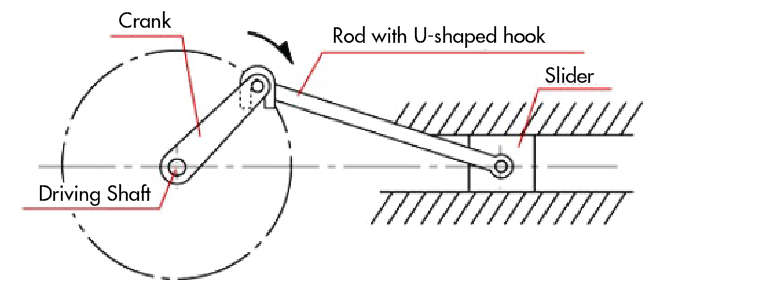
- Even dreams can be interpreted as the displacement of stored tensions into other forms (dreams are often highly metaphoric) e.g. a mouse hitting a dragon with a hockey stick. Where the dragon is the boss and the mouse is you.
Like every defense mechanism, displacement is good in the short run, however, it can lead to major complications when this continues in the long run. It is for this reason very important to channelize it in a healthy manner and come up with alternative solutions.
If you or someone you know has been using the defense mechanism of displacement and is seeking help to improve your current life situation either in personal or professional life, call us on +91-8080-2084-73 or use the contact us form.
Therapists Niche: Working with Displacement
When a client has been using the defense mechanism of displacement, there are two basic possibilities:
- The client may be unaware that he/she is displacing emotions
- The client may be aware that he/she is displacing emotions
Recommended Steps and Techniques
- If the client is unaware that he/she is using the defense mechanism of displacement, the therapist can help the client become aware of the same either:
- With the help of a structured interview (checkout Meta Model) or
- With the help of the NLP technique of Perceptual Position or
- By helping the client become more mindful of their emotions and their responses
- Once the client becomes aware of the displacement taking place, the next step is to help the client understand the original source of the emotion.
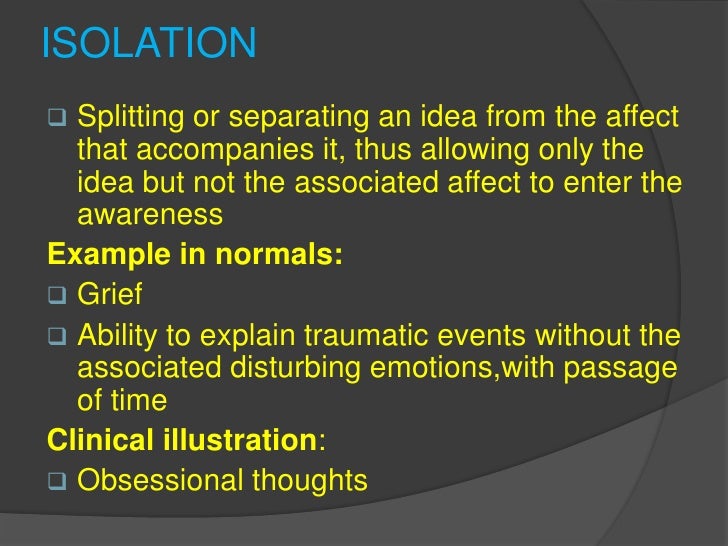 The original source would include the person, the situation and the thought/belief that is causing the emotion. Open-ended questions (Meta-model again) in combination with the ABC model from CBT can be used by the therapist.
The original source would include the person, the situation and the thought/belief that is causing the emotion. Open-ended questions (Meta-model again) in combination with the ABC model from CBT can be used by the therapist. - Next, help the client restructure the thought or the underlying belief identified in the previous step. If-then statement, NLP SWISH and belief change processes can be used for the same.
- Next, help the client brainstorm strategies and identify skills that can help him/her deal with the original source more effectively. SOFT SEA™ Coaching process along with NLP Modelling are the techniques that can be used for the same.
- Next, help the client release the current emotion (that was being displaced) and replace it with a more appropriate/resourceful emotion. Hypnodrama (drama in a hypnotic state combined with anchoring) is probably the best process to use for this purpose.
- Last do future pacing so that the client can mentally rehearse the application of the new strategy and skills is the new resourceful state.
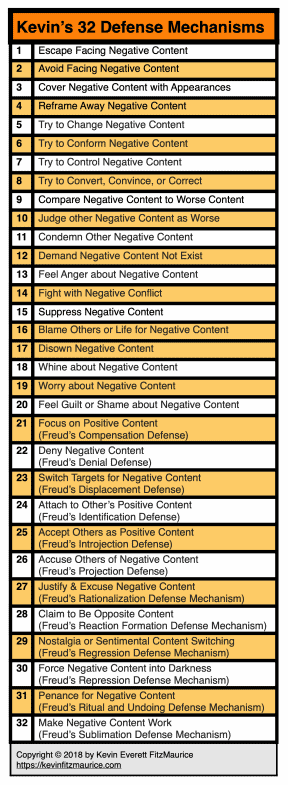 Make necessary modification in the strategy if required.
Make necessary modification in the strategy if required.
All the techniques mentioned in this post and a lot more is what you learn and practice during the Cognitive Hypnotic Psychotherapy™ Program. It is the first and the only course that seamlessly integrates different approaches to psychotherapy (cognitive, behavioural, psycho-dynamic and humanistic) with techniques from Hypnosis, NLP, Metaphor Therapy and Mindfulness.
Defense mechanisms of personality
Sigmund Freud introduced the term "defense mechanism" for the first time.
The functional significance of psychological defenses is to reduce anxiety, tension, restlessness, frustration caused by the contradiction between the impulses of the unconscious and the requirements of the external environment that arise as a result of interaction with the environment. Psychological protection performs the function of regulating human behavior, making it more adaptive, increases adaptability, stabilizes the psyche and normalizes the state of the individual.
The main defense mechanisms include: repression, projection, substitution, rationalization, reactive formation, regression, sublimation, denial.
- Displacement.
One of the main and primary mechanisms is repression, which consists in rejecting events, thoughts, and experiences that are unpleasant for us. As a result, a person ceases to be aware of internal conflicts, and also does not remember traumatic events of the past. The repressed impulses do not lose their activity in the unconscious sphere and appear in the form of dreams, jokes, slips of the tongue, and so on.
Repression can be compared to a dam that can break - there is always a risk that memories of unpleasant events will break out. The psyche spends a huge amount of energy on their suppression.
- Projection.
In terms of its importance, the next mechanism is projection - attributing one's own socially undesirable feelings, desires, aspirations to others.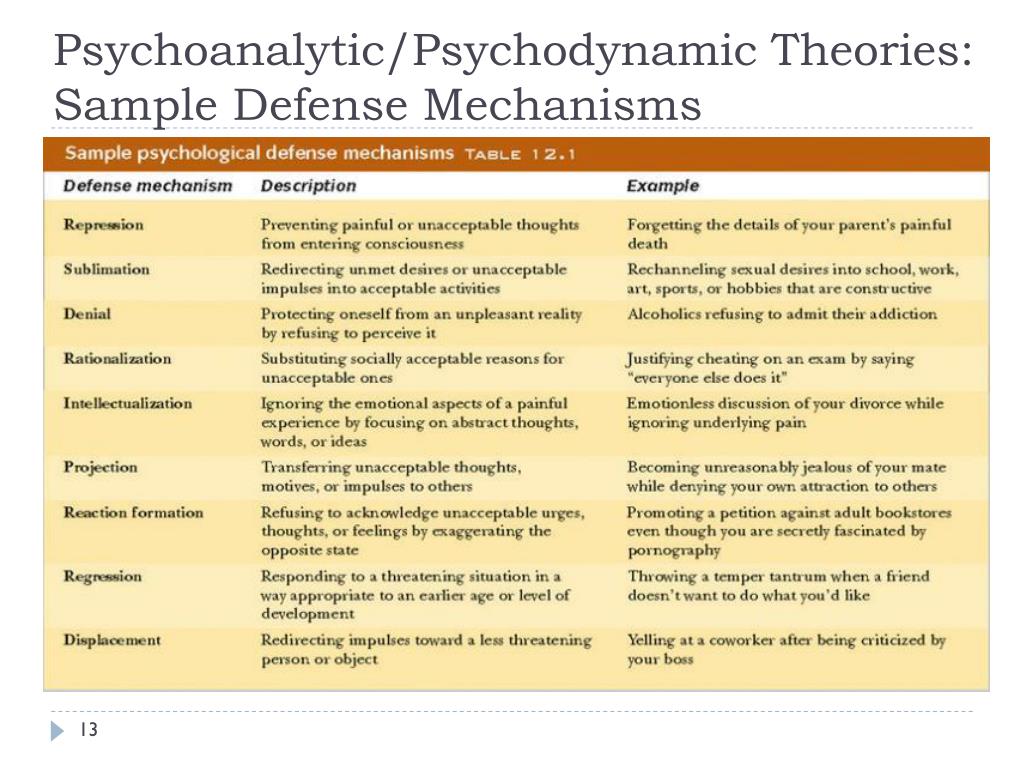 This psychological defense mechanism makes it possible to relieve oneself of responsibility for one's own character traits and desires that seem unacceptable.
This psychological defense mechanism makes it possible to relieve oneself of responsibility for one's own character traits and desires that seem unacceptable.
For example, unreasonable jealousy may be the result of the projection mechanism. Protecting himself from his own desire for infidelity, a person suspects his partner of infidelity.
- Replacement.
In this defense mechanism, the manifestation of the instinctive impulse is redirected from a more threatening object or person to a less threatening one. For example, an overly demanding employer criticizes an employee, and she reacts with outbursts of rage to minor provocations from her husband and children. She does not realize that, being the objects of her irritation, they are simply replacing the boss. In this example, the true object of hostility is replaced by a much less threatening one for the subject.
- Rationalization.
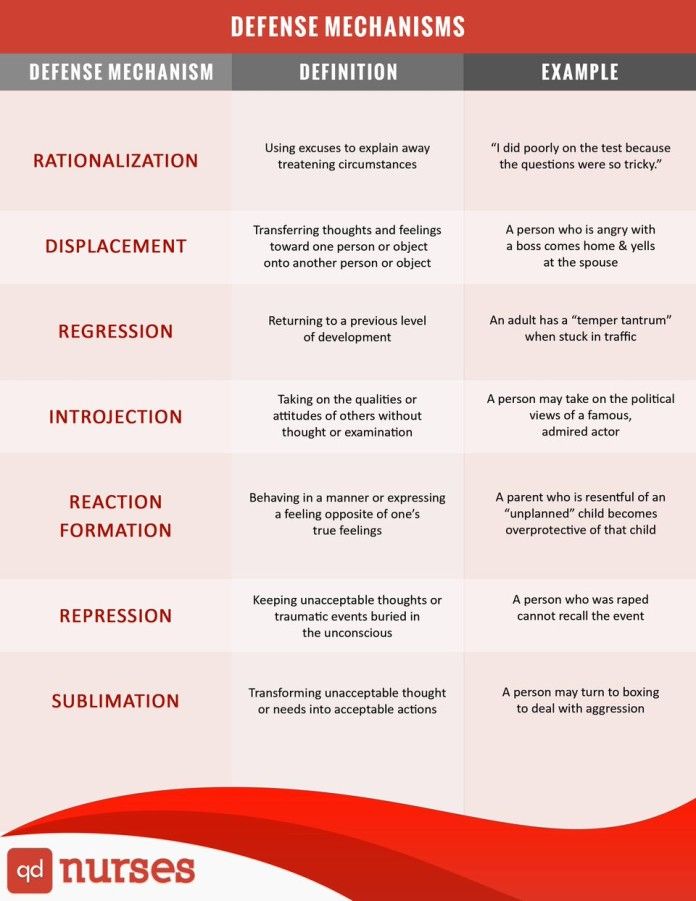
Rationalization as a defensive process consists in the fact that a person unconsciously invents logical judgments and conclusions to explain his failures. This is necessary to maintain your own positive self-image. One of the most commonly used types of such protection is rationalization according to the “green grapes” type. This name originates from Aesop's fable about the fox, which could not reach the bunch of grapes and therefore decided that the berries were not yet ripe.
- Jet formation.
Reaction formation becomes a psychological defense mechanism when a person demonstrates actions that are opposite to his true experiences. In the case of this defensive reaction, a person unconsciously transforms one mental state into another (for example, hatred into love, and vice versa).
Such a fact is of great importance in assessing the personality of a person, because it indicates that a person's real actions can only be the result of a veiled distortion of his true desires.
For example, excessive anger in other cases is only an unconscious attempt to disguise interest and good nature, while ostentatious hatred is the result of love that frightened a person who unconsciously decided to hide it behind an attempt to openly splash out negativity.
- Regression.
In regression, a person returns to earlier forms of behavior. Regression allows you to adapt to a traumatic situation due to an unconscious return to the forms of behavior familiar from childhood: crying, whims, emotional requests, etc. We have learned at an unconscious level that such forms of behavior guarantee support and safety.
This type of protection is especially often manifested in a situation of illness, when an adult begins to behave like a child. Regression makes it possible to throw off the burden of responsibility for what is happening: after all, in childhood, parents were responsible for a lot.
Abuse of regression leads to the lack of a successful life strategy, difficulties in relationships with other people and the emergence of psychosomatic diseases.
- Sublimation.
Sublimation is an unconscious switching of negative psychic energy to engage in socially useful work. Sublimation is expressed in the fact that a person experiencing some kind of neurotic conflict finds a replacement for internal anxiety by switching to another activity (creativity, chopping wood, cleaning an apartment, etc.).
This mechanism is considered as the only constructive strategy of behavior in a situation of psychological discomfort.
Sublimation is a productive defense mechanism that has given the world a huge number of works of art.
- Negative
This defense mechanism allows you to ignore (deny) obvious facts, protecting the psyche from injury. This is a complete rejection of unpleasant information. Denial is often the first reaction to the pain of loss or to the presence of a dangerous illness.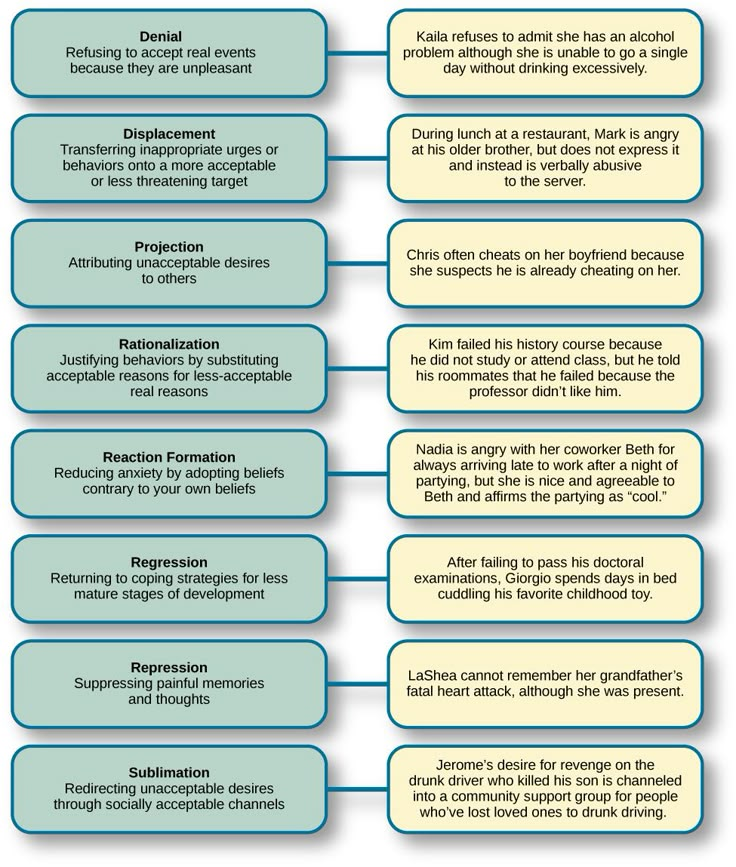
When a person refuses to admit that an unpleasant event has occurred, this means that he turns on such a defense mechanism as denial.
Reality denial occurs there and then when people say or insist, "This just can't happen to me," despite obvious evidence to the contrary (as happens when a doctor tells a patient that he has a terminal illness).
Considering the mechanisms of psychological defense of a person, it is necessary to remember the following:
a person does not realize that he uses defense mechanisms;
2) defense mechanisms do not appear in isolation; a person usually uses 1-2 defense mechanisms;
3) protective mechanisms protect a person from overwhelming anxiety, tension, prevent disorganization of behavior and help maintain the integrity of the individual.
4) a person's awareness of the existence of his psychological defenses helps him to better understand and accept himself.
If you have any questions or are interested in studying your personality, the psychologists of the medical-psychological department will be happy to help you.
References:
- Melnik S.N., Personality Psychology
- SA Zelinsky Protective mechanisms of the psyche. Characteristics of the main protections
- Chumakova Elena Viktorovna "Psychological protection of the individual in the system of parent-child interaction"
- Belov V.G., Biryukova G.M., Fedorenko V.V. Psychological protection and its role in the process of formation of the human adaptive system.
- S.L. Bogomaz Psychological protection of personality: methodology, mechanisms, tools.
The material was prepared by the psychologist I. D. Chernykh,
medical and psychological department.
What is bias in psychology?
Displacement is a psychological defense mechanism in which a person redirects a negative emotion from its original source to a less dangerous recipient.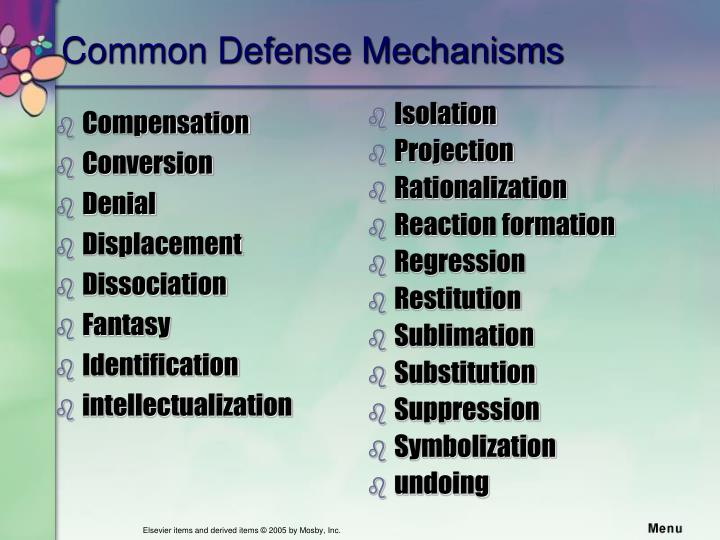 The classic example of defense is the repressed one. If a person is angry, but cannot direct his anger at the source without consequences, he can take his anger out on a person or thing that poses less risk. What is bias in psychology?
The classic example of defense is the repressed one. If a person is angry, but cannot direct his anger at the source without consequences, he can take his anger out on a person or thing that poses less risk. What is bias in psychology?
Defense mechanisms
When people have negative emotions or urges, they often look for ways to cope with these unwanted feelings. Unlike the conscious coping strategies we use to manage everyday stress, defense mechanisms operate at a completely unconscious level.
Displacement, like many other psychological defense mechanisms, often occurs subconsciously - a person does not realize that he is doing it.
Defense mechanisms are one way the mind unconsciously tries to reduce our anxiety and restore emotional balance. 3 Psychological defenses operate without our awareness to help us cope with threats to people, things or the environment. We may not be aware of these feelings and urges, but they still affect our behavior and can cause anxiety.
When we use displacement, our mind feels that the response to the source of our disappointment can be unacceptable - even dangerous. Instead, he finds a less dangerous object for us that can serve as a safer outlet for our negative feelings.
Sublimation
Sigmund Freud believed that a certain subtype of displacement called sublimation is an important source of creativity and inspiration. 5 Sublimation involves the shifting of unacceptable sexual urges to non-sexual activities that are productive and socially acceptable, such as work and creativity. Sublimation provides a constructive outlet for unacceptable urges.
History
Sigmund Freud's daughter Anna Freud was one of the first psychologists to compile a list of defense mechanisms. However, displacement was not included in the list of original defense mechanisms included in her book The Ego and Defense Mechanisms (originally published in Germany in 1936).
Anna Freud later stated that although several important defenses were highlighted in her list, she felt that it was far from definitive.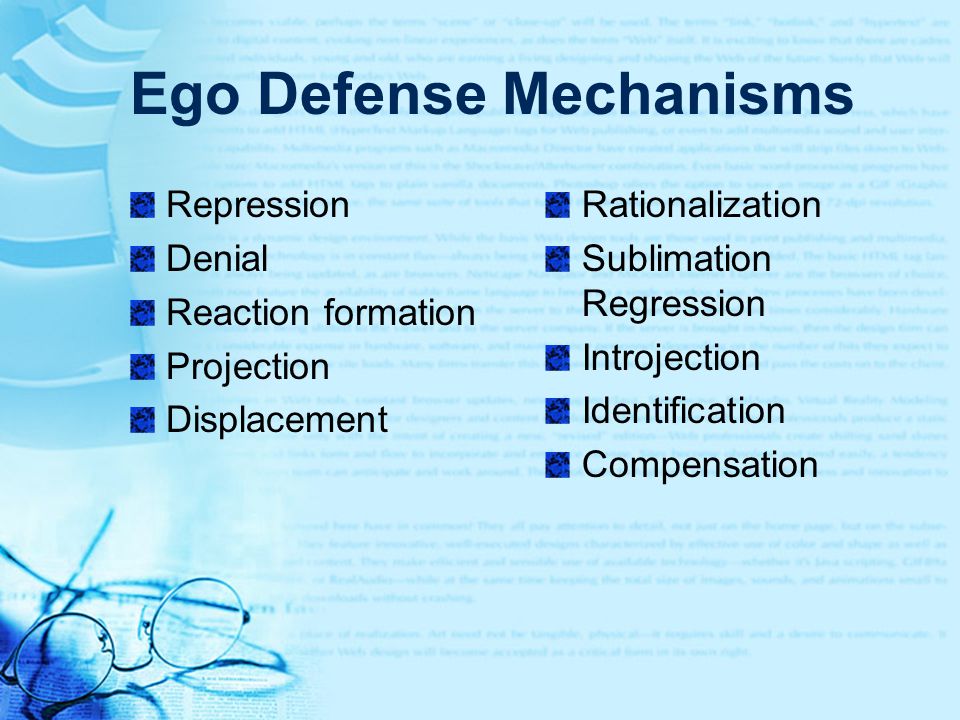 Subsequent pioneers of psychology did indeed identify displacement as an important ego defense mechanism.
Subsequent pioneers of psychology did indeed identify displacement as an important ego defense mechanism.
Study
Studies on the validity of bias are mixed. For example, a 1998 study found that displacement was poorly supported by empirical evidence. However, more recent research in 2015 supported the theory that states of physical and emotional change tend to shift from one situation to another.
For example, although you may restrain yourself in a social setting because a reaction would be inappropriate, suppressing your feelings will not make them go away. Your emotional state will remain the same. Later, you may find yourself in an environment where you can react with less consequences, and then you will release repressed feelings.
Other studies have also offered broad support for defense mechanisms, including displacement, as important to human health and relationships. Examining data from a 70-year longitudinal study, a team of researchers found that psychological defense mechanisms can affect both the body and the mind.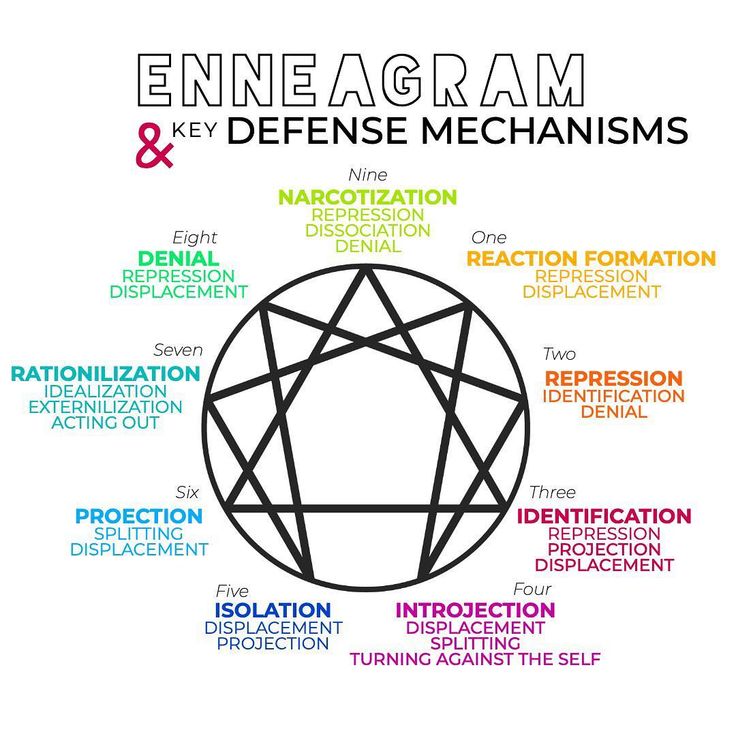
In a paper published in 2013, the researchers stated that participants in their study who used adaptive defense mechanisms (including bias) in middle age had better physical health later in life. The researchers suggested that mature protection plays a key role in creating strong and supportive social relationships that contribute to improved physical health.
How it works
Imagine that your boss has reprimanded you at work. Taking your anger or frustration directly to your boss is not only unwise, it could cost you your job. Instead, you hold back (or suppress) your emotions for the rest of the day.
Once you get home, you may vent your anger at an unsuspecting roommate or overreact to a trigger event, such as your children's bad behavior. Most often, the triggering event is relatively unimportant. It is your reaction that is disproportionate - even excessive.
The anger you felt towards your boss is released over time, but indirectly. The consequences of yelling at a roommate or scolding children are likely to be less severe than if you got rid of your frustration with your boss or colleagues.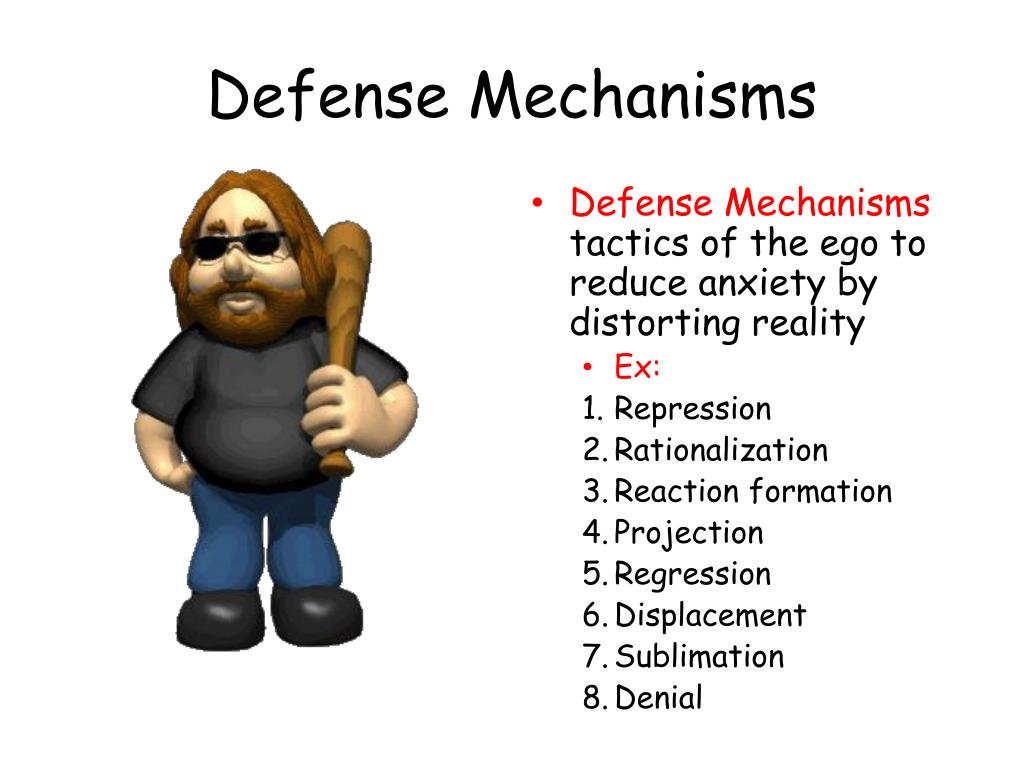 The object or person who becomes the object of the displaced senses may vary, but is usually chosen because it is less dangerous (or even powerless).
The object or person who becomes the object of the displaced senses may vary, but is usually chosen because it is less dangerous (or even powerless).
If you have ever had negative feelings for a friend, family member, or even complete stranger when you were upset about something else, then you used displacement as a defense mechanism (even if you didn't know it) .
Offset Examples
Here are a few imaginary scenarios (many of which you may sound familiar) that illustrate offset:
- A boss scolds an employee for poor performance during a presentation. An employee leaves work to have lunch at a local restaurant, where they yell at the waiters for a small mistake with their order.
- You are unhappy with your spouse because he does not help you around the house. When you ask your kids to get to work and they whine back, your anger explodes. You yell at them and accuse them of never helping around the house.
- A man is attracted to his spouse's best friend, but he knows that his actions can have disastrous consequences.
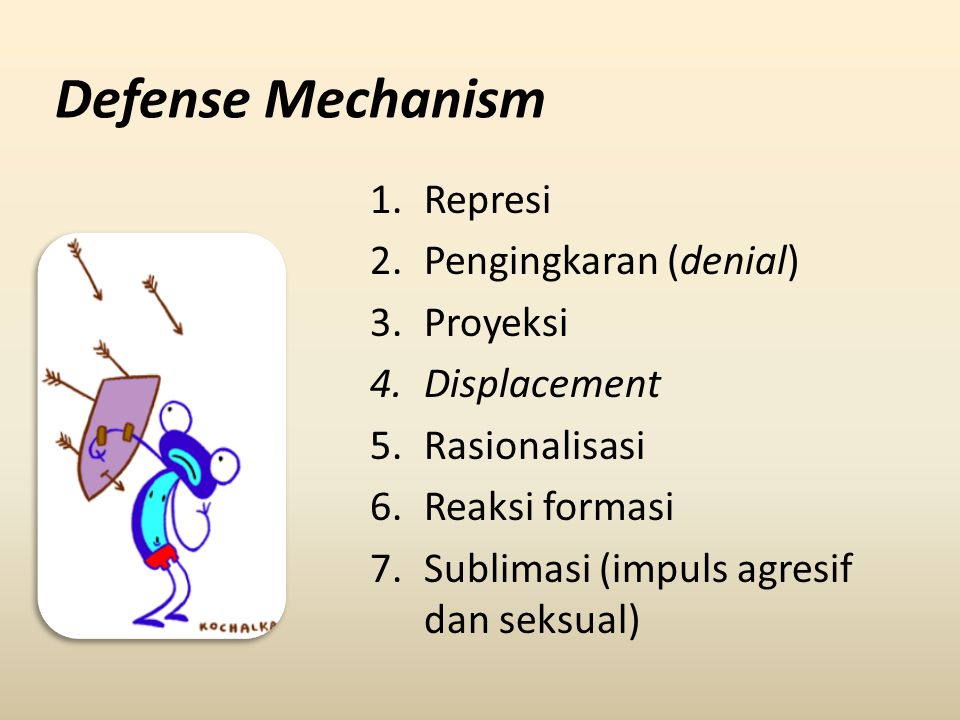 Instead, the desire they feel is subconsciously repressed and they develop a sexual fetish for glasses like those worn by a spouse's best friend.
Instead, the desire they feel is subconsciously repressed and they develop a sexual fetish for glasses like those worn by a spouse's best friend. - You lose your job and have difficulty finding a new one. Fearing that you won't be able to pay your bills, you begin to project your frustration and sense of failure onto the immigrants in your area, blaming them for your inability to find work.
Unintended Consequences
Displacement can cause an unintended chain reaction. For example, repressed aggression can become a cycle. For example, imagine an employee who is angry with his boss. They take out their anger on their spouse when they return home. Now, when they are angry themselves, the spouse may be irritated with their children. In turn, children can project their frustrations onto each other.
Displaced interpersonal aggression can also lead to prejudice against certain social groups. For example, some scholars have argued that the hostility that the Germans felt towards the Jewish people after World War I could be an example of a repressed feeling of anger at the economic ramifications of the war.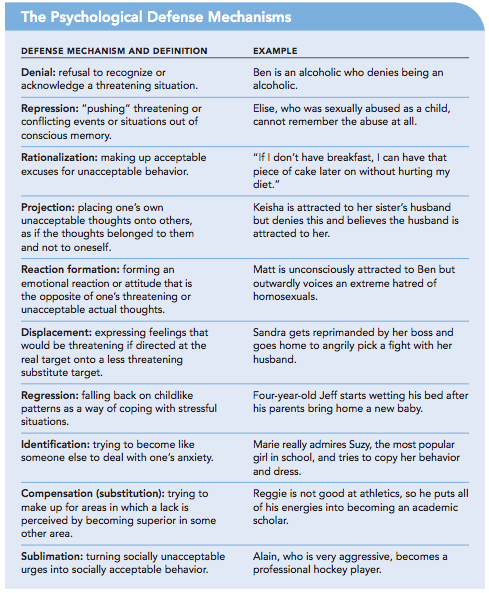
Instead of directing their collective anger at their actions or their own government, people redirected their anger at a group of people they considered less dangerous targets. This phenomenon is also known as "scapegoats".
Characteristics
Defense mechanisms are very common and are usually a normal aspect of daily functioning. Moving as a defense helps us direct emotions and urges that might be considered inappropriate or harmful to healthier, safer, or more productive sources.
When used properly, defense mechanisms such as movement protect us from negative feelings, help minimize frustration, protect our self-esteem, and manage stress levels. Moving can protect us from anxiety by hiding things that are stressful or unacceptable to us, and help maintain self-esteem.
But defense mechanisms such as repression can also be useless if people rely on them too much or when they lead to problematic behavior and interactions with others. Overuse of these mechanisms has been associated with psychological stress and poor functioning.
Displacement is a way to redirect feelings, but can also be harmful. There are several factors that affect how and when displacement occurs.
Age
Young children express their feelings more openly. Therefore, they are more likely to express their negative emotions towards the original goal (regardless of the correctness of the answer).
For example, a four year old child is more likely to just yell at his parents when they are upset. On the other hand, a 14-year-old teenager can get rid of disappointment in relation to parents by arguing with a younger brother or sister.
Intensity
Strongly upsetting urges or feelings can lead to a stronger display of emotion towards the substitute target. For example, an inappropriate urge (such as wanting to hit someone) might be expressed as a highly charged emotional outburst (such as yelling at a spouse).
Frequency
Most people have experienced suppression of their negative emotions on the secondary target. While displacement may be a normal response, it can cross the line into maladaptive or even offensive behavior. If a person relies on repression as a defense mechanism to deal with all of their emotional distress, it is less likely to be useless and harmful.
While displacement may be a normal response, it can cross the line into maladaptive or even offensive behavior. If a person relies on repression as a defense mechanism to deal with all of their emotional distress, it is less likely to be useless and harmful.
What you can do
Overdependence on repression or any other defense mechanism can be problematic, or at least useless. If you are concerned about the use of repression as a defense mechanism, you may want to see a counselor in psychotherapy. Here are a few ways to look at your own behavior to better understand if you're using offset to your advantage.
Evaluate
One of the first steps is also one of the more difficult: observing your behavior and actions and determining if the bias might be causing them. Displacement is not something that can be easily seen. Often, conclusions can only be drawn from what you can learn from your own behavior.
It may be helpful to work with a therapist at this stage.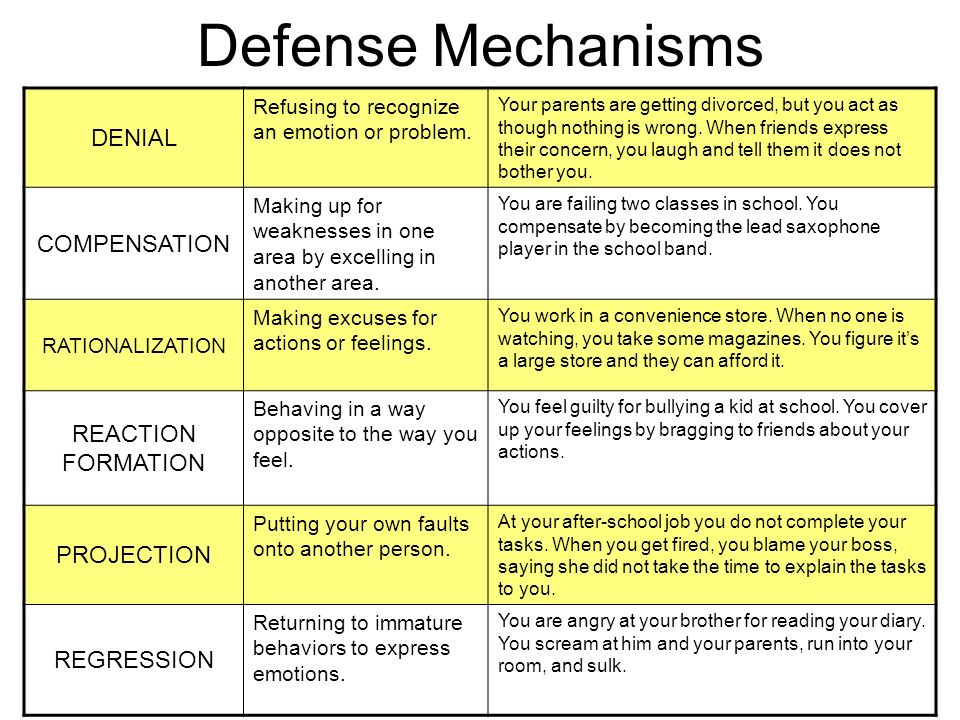 They can look at your behavior "from the outside" and help you see things from a more objective point of view.
They can look at your behavior "from the outside" and help you see things from a more objective point of view.
The therapist can witness (and point out) contradictions between your behavior and your words, body language, or other cues.
For example, you might tell your therapist that you don't mind if your spouse works late and on weekends, but your body language and your speech may suggest otherwise. As you share more about your behavior, it may become clear that when you have a temper with the kids in the evenings, it really is a sign of the frustration you feel towards your spouse.
Reflect
Reflection is a strategy therapists can use to help you recognize when you are using defense mechanisms such as displacement. With this strategy, the therapist reflects your feelings back to you in a way that encourages you to reflect on what you have done or said.
The purpose of using the reflection technique is to identify hidden anxieties or fears that have played a role in your behavior.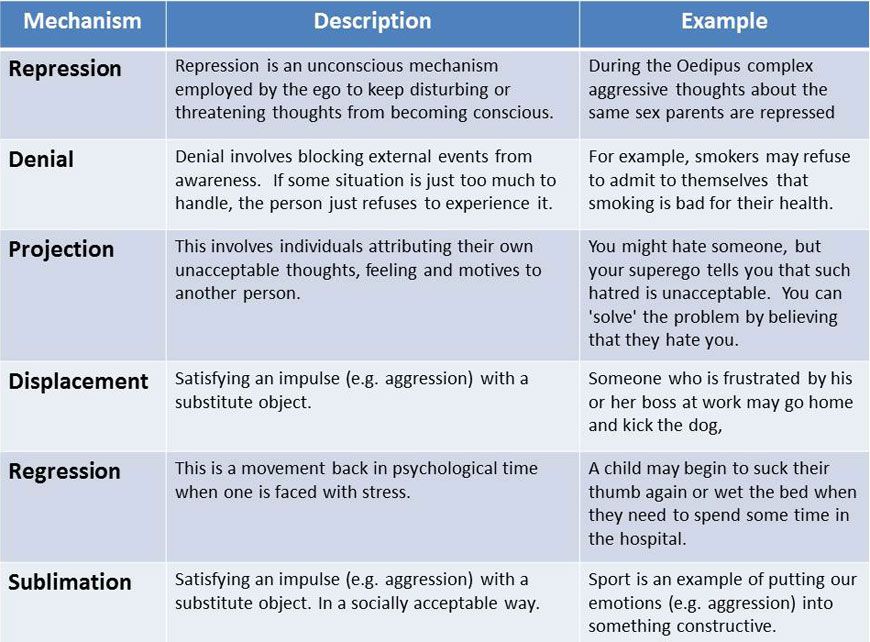
For example, when you tell your therapist about expressing anger at a colleague, you may reveal one of your main fears - that your new manager will not recognize your talents and efforts. Instead of expressing your emotions to your boss (a threatening target), you take out your frustration on a colleague (a less dangerous target).
Rethink
Once you begin to recognize episodes of unhealthy movement in your own life, the next step is to find purposeful ways to change your thinking and behavior. For example, if you're yelling at your spouse because you're getting rid of frustration at work, stop, take a step back, and take the time to regain control.
When you find yourself exhibiting maladaptive behavior caused by displacement, try to rethink the situation and find a healthier outlet for your feelings.
Make a conscious effort to redirect your negative feelings to a suitable target. Alternatives may include describing the situation and how you feel, participating in a sport or exercise, or engaging in a productive hobby.